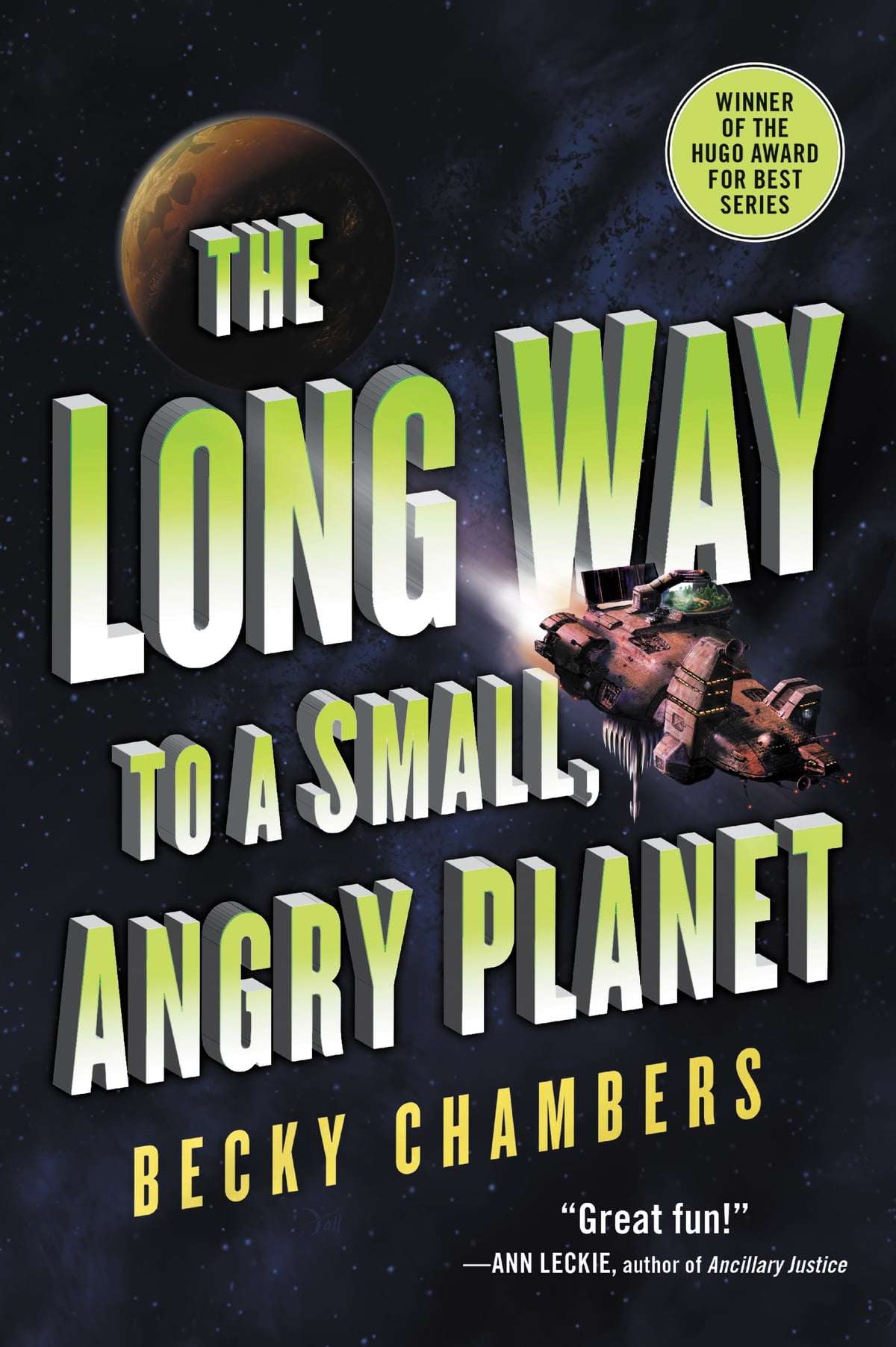The Long Way to a Small, Angry Planet, by Becky Chambers
Hopepunk
I recently read an article stating that now would be a great time to dive into a sub-genre of science fiction called “hopepunk”, where the future isn’t as dark and tortured as many visions embrace. And usually when hopepunk is mentioned, so too is Becky Chamber’s Wayfarer series – for good reason. It’s like comfort food for the mind. So I thought this week I’d recommend the first book in the series (and add that the ones following this initial installment are just as good, and just as hopeful).
The Wayfarer is a beat up, patched up, blustery little ship, but then, it doesn’t need to be fancy. It’s a tunneling ship, used to punch wormholes in space, allowing for quick travel across vast distances. The Wayfarer is a capable ship, but the crew would love to be able to equip her for larger, more lucrative jobs. Still, that takes a lot more scratch than they can scrounge from the work they currently perform. When the chance to take an edgy job arises – blind-punching a wormhole between Central space and the Toremi, a brutal, warlike system whose inclusion in the Galactic Commons has been highly controversial – the crew decides to go for it, despite the unknowns and unspoken dangers.
Hardnosed But Fair
The captain of the Wayfarer is Ashby Santoso, hardnosed but fair. He’s human, but his second in command is not; she’s of a feathered reptilian race (but don’t use the word “lizard” to describe her – that’s a racial slur). Neither is the navigator who is able to conceptualize multidimensional space as easily as humans can do algebra; or the creature who serves as both medical attendant and culinary specialist (“If you crossed an otter with a gecko, then made it walk like a six-legged caterpillar, you’d be getting somewhere.”)
The other humans are also far from typical, from the algaeist (algae being a vital component of the workings of the ship) who is a sanctimonious jerk, and the mechanical whiz who has eschewed the common implants that would “fix” his dwarfism. And then there is Kizzy -ditsy and crazy and chaotic, but also a technical genius. And there is Lovey, the ship’s AI, who – although not human or even organic – is still a distinct personality.
This is the crew that Rosemary Harper joins as a low level but still highly appreciated administrative clerk. She’s new to tunneling – heck, she’s new to interstellar travel – but she has her own reasons for wanting to leave her home behind.
Customs and Histories
It is incredibly gratifying – and highly entertaining – to experience a story where distinctly non-human characters play a vital role in not only the workings of the ship, but in the dynamics of the crew. And it’s not just their appearances – it’s their customs and histories, their thought processes and tastes and reactions. Since Rosemary is new to virtually every aspect of space travel, we get to see her wide eyed wonder – and her trepidation – at not only abandoning her planet-side existence, but also in interacting with other creatures who challenge her beliefs and assumptions. She comes to see her crewmates not as other species, but as unique and complex individuals, and we get to take those steps with her.
The learning curve for Rosemary is high, but expectations in this future world are far more magnanimous than what we have today: not only are humans a small portion of the sapient beings in the Galactic Commons, they are considered less advanced (and less prestigious) than many of the other races that have been interacting with each other for millennia. This allows for much of what Rosemary learns to be approached carefully, with acknowledgment that we have a prejudice based on our species that must be overcome. Yet there is no political agenda involved in this careful treading in a larger universe; it simply is the way of things.
A Diverse Crew
As we watch Rosemary acclimate to her new life, we find ourselves learning and cringing and opening up right along with her. As the Wayfarer travels towards Toremi Ka and the challenge that awaits her there, we get more than mere glimpses into the lives and minds of the diverse crew; we begin to understand and appreciate them beyond their differences. They become vital, not only to the story, but to each other.
When the final, stunning climax comes, there is much more at stake than a lucrative payoff. The destination becomes not the apex of the story, but the catalyst that punches home how important the journey has been. The Long Way to a Small, Angry Planet is a breathtaking experience, even in the parts where it breaks your heart – the kind of experience that will stay with you and tinge the way you look at your own life for a long time to come.
Hopepunk, indeed. Time to dive in.
—Sharon Browning


